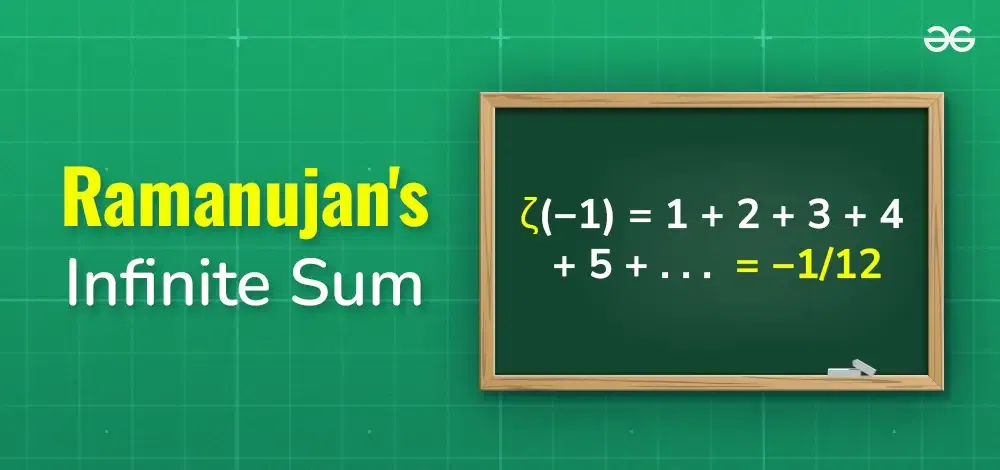
|
|
Srinivasa Ramanujan, one of the most brilliant mathematicians of the 20th century, introduced a unique method for dealing with divergent series, known as Ramanujan’s summation. Traditional summation techniques fail for these series, making Ramanujan’s approach particularly innovative. One of the most famous examples of Ramanujan’s summation is his handling of the infinite sum of natural numbers: 1 + 2 + 3 + 4 + . . . Intuitively, this series diverges to infinity. However, using his summation method, Ramanujan assigned it a surprising and counterintuitive value of −1/12. This result, although not a sum in the conventional sense, is consistent within the framework of Ramanujan’s summation and has significant implications in various fields, including theoretical physics and string theory.  Table of Content What is Ramanujan’s Infinite Sum?Ramanujan’s infinite sum, often referred to as the Ramanujan summation, involves the sum of all positive integers:
Intuitively, the sum of all positive integers diverges to infinity. However, Ramanujan discovered a way to assign a finite value to this divergent series using techniques from complex analysis and analytic continuation. He found that:
This result is surprising and counterintuitive, and it’s important to note that it doesn’t mean the sum of all positive integers is literally −1/12. Instead, this result arises in specific contexts, such as string theory and the study of the Riemann zeta function. One way to understand this result is through the regularization of the series using the Riemann zeta function, ζ(s), which is defined as:
For Re(s) > 1, this series converges. However, through analytic continuation, it can be extended to other values of sss. For s = −1, we have:
Since the original series 1 + 2 + 3 + 4 + . . . can be formally written as ζ(−1), we get:
Who was Srinivasan Ramanujan?
What is an Infinite Sum?An infinite sum, also known as an infinite series, is the sum of the terms of an infinite sequence. Mathematically, if a1, a2, a3, . . . is an infinite sequence of numbers, then the infinite sum (or series) is written as:
Mathematical Formulation of Ramanujan’s Infinite SumMathematical formulation of Ramanujan’s infinite sum is affirmed with the help of Reimann Zeta function. Let’s discuss what is Reimann Zeta Function first. Riemann Zeta FunctionThe Riemann zeta function ζ(s) is defined for complex numbers sss with Re(s) >1 by the series: This series converges when Re(s) > 1. However, ζ(s) can be analytically continued to other values of sss except for s = 1, where it has a simple pole. Evaluation at s = -1Through analytic continuation, it is possible to evaluate the zeta function at s = −1:
Surprisingly, the value of ζ(−1) is:
This result assigns a finite value to the divergent series 1 + 2 + 3 + 4 + 5 + . . . ConclusionRamanujan’s infinite sum is formally written as: 1 + 2 + 3 + 4 + 5 + . . . = −1/12 This result is obtained through the analytic continuation of the Riemann zeta function and is used in various advanced areas of mathematics and theoretical physics. Read More, FAQs on Ramanujan’s Infinite SumWhat is Ramanujan’s Infinite Sum?
How can the sum of all positive integers be −1/12?
What is analytic continuation?
Who was Srinivasa Ramanujan?
How is Ramanujan’s sum used in string theory?
|
Reffered: https://www.geeksforgeeks.org
| Engineering Mathematics |
| Related |
|---|
| |
| |
| |
| |
| |
Type: | Geek |
Category: | Coding |
Sub Category: | Tutorial |
Uploaded by: | Admin |
Views: | 21 |